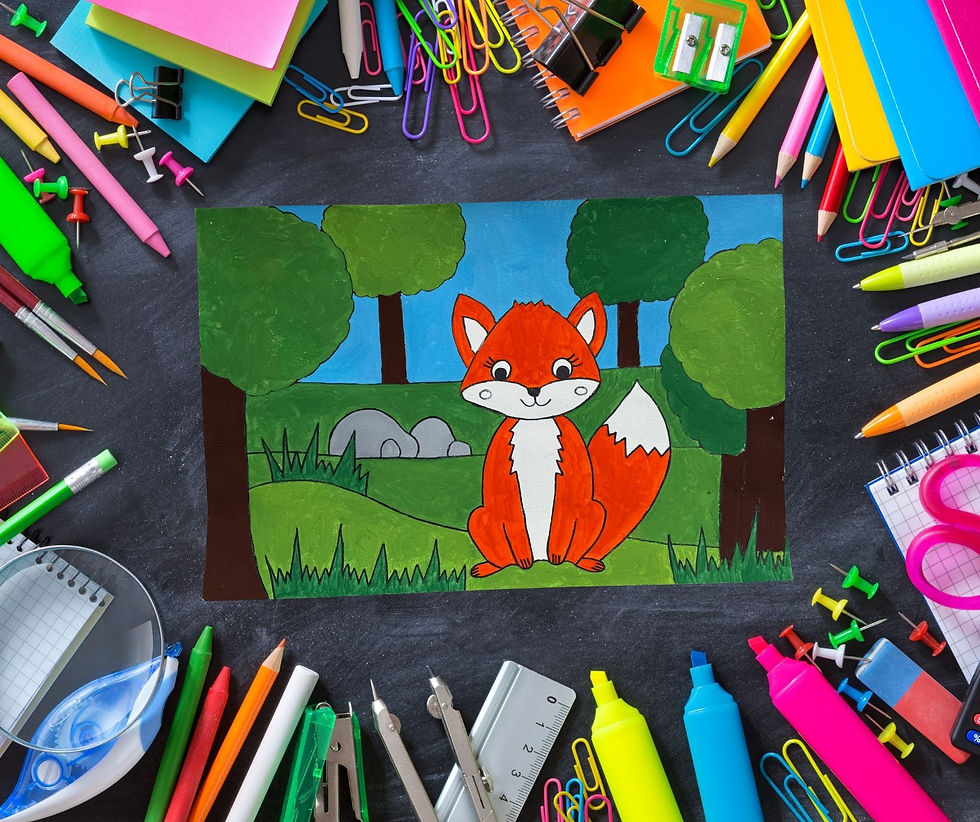Tips for Learning Art from the Comfort of Home
- Jasmin Langsch
- Aug 4
- 3 min read
Updated: Aug 12
So, you’ve decided to unleash your inner Picasso but prefer to do it without leaving your cozy couch? Perfect! Learning art from home is not only possible but can be downright fun and rewarding. Whether you’re a total newbie or someone who’s dabbled in doodles, this guide will help you get started and keep your creative juices flowing. Plus, you’ll get some handy tips on how to make the most of online art lessons that fit your schedule and style.
Setting Up Your Creative Space at Home
Before you dive into your first brushstroke or sketch, it’s important to create a space that inspires you. You don’t need a fancy studio; just a little nook where you can spread out your supplies and not worry about making a mess.
Choose a well-lit spot: Natural light is best, but a good desk lamp works wonders.
Organize your materials: Keep pencils, paints, brushes, and paper within easy reach.
Add some inspiration: Hang up your favorite art prints or photos that spark your creativity.
Keep it comfy: A supportive chair and a clutter-free desk make long sessions enjoyable.
Remember, your space should feel inviting. If you’re cozy, you’re more likely to stick with your art practice.

How to Make the Most of Online Art Lessons
Online art lessons are a fantastic way to learn at your own pace without the pressure of a classroom. The best part? You can pause, rewind, and practice as much as you want. Here’s how to get the most out of them:
Pick the right course for your level: Whether you want to master watercolors or sketch portraits, choose lessons that match your skill level.
Set a schedule: Treat your lessons like appointments. Consistency is key to improvement.
Gather your supplies beforehand: Check the materials list and have everything ready before you start.
Engage with the community: Many online courses have forums or social media groups. Share your work and get feedback.
Practice regularly: Try to draw or paint a little every day, even if it’s just a quick sketch.
By following these tips, you’ll turn those online art lessons into a fun and productive habit.

What are the 7 Types of Art?
Understanding the different types of art can help you decide what you want to explore. Here are the seven main types:
Painting - Using pigments on surfaces like canvas or paper.
Drawing - Sketching with pencils, charcoal, or ink.
Try experimenting with a few types to find what excites you the most. You might discover a hidden talent for digital art or a passion for sculpting!

Tips for Staying Motivated and Overcoming Creative Blocks
Let’s be honest - sometimes the muse just doesn’t show up. Here’s how to keep your motivation high and push through those frustrating moments:
Set small goals: Instead of aiming to paint a masterpiece, focus on completing a simple sketch.
Keep a sketchbook: Doodle daily without pressure. It’s a great way to practice and track progress.
Change your environment: If you’re stuck, try working outside or in a different room.
Take breaks: Step away for a bit to refresh your mind.
Celebrate your wins: Finished a drawing? Show it off to friends or post it online.
Try new techniques: Sometimes a new medium or style can spark creativity.
Remember, art is about expression, not perfection. Laugh at your mistakes and enjoy the process!
Essential Supplies for Home Art Learning
You don’t need to break the bank to start creating. Here’s a list of basic supplies that will cover most beginner projects:
Sketchbook or drawing paper
Graphite pencils (HB, 2B, 4B)
Erasers (kneaded and regular)
Colored pencils or markers
Watercolor set or acrylic paints
Paintbrushes in various sizes
Palette for mixing colors
Ruler and sharpener
As you grow more confident, you can add specialty items like charcoal sticks, pastels, or digital tablets. Start simple and build your collection as you go.
Keep Creating and Have Fun!
Learning art at home is a wonderful journey filled with discovery and joy. With a little patience, the right tools, and some online art lessons, you’ll be amazed at what you can create. So grab your brushes, put on your favorite playlist, and let your creativity run wild. Remember, every artist started somewhere - and today, that somewhere can be your living room!
Happy creating!





Comments